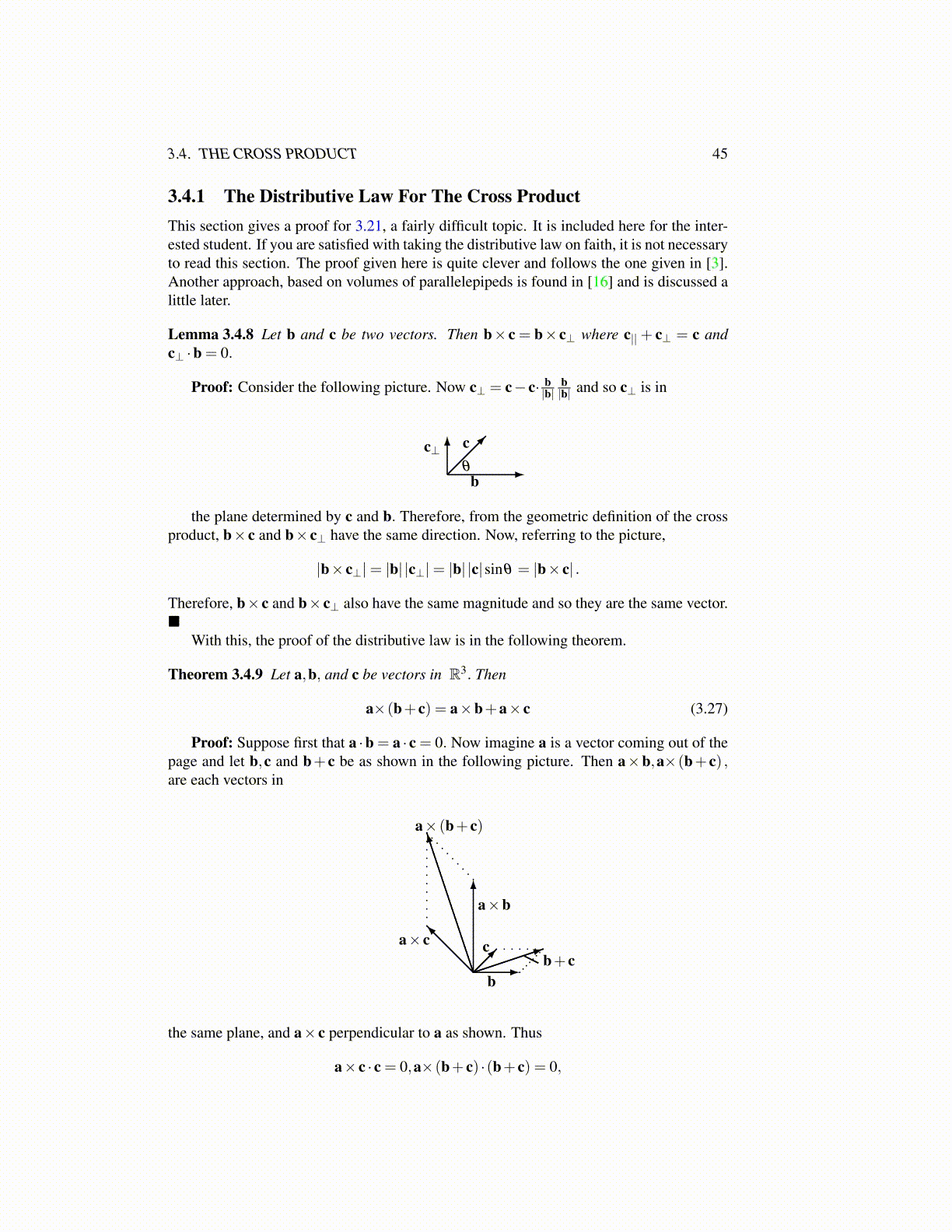
3.4. THE CROSS PRODUCT 45
3.4.1 The Distributive Law For The Cross ProductThis section gives a proof for 3.21, a fairly difficult topic. It is included here for the inter-ested student. If you are satisfied with taking the distributive law on faith, it is not necessaryto read this section. The proof given here is quite clever and follows the one given in [3].Another approach, based on volumes of parallelepipeds is found in [16] and is discussed alittle later.
Lemma 3.4.8 Let b and c be two vectors. Then b× c = b× c⊥ where c||+ c⊥ = c andc⊥ ·b = 0.
Proof: Consider the following picture. Now c⊥ = c− c· b|b|
b|b| and so c⊥ is in
bθ
cc⊥
the plane determined by c and b. Therefore, from the geometric definition of the crossproduct, b× c and b× c⊥ have the same direction. Now, referring to the picture,
|b× c⊥|= |b| |c⊥|= |b| |c|sinθ = |b× c| .
Therefore, b× c and b× c⊥ also have the same magnitude and so they are the same vector.■
With this, the proof of the distributive law is in the following theorem.
Theorem 3.4.9 Let a,b, and c be vectors in R3. Then
a×(b+ c) = a×b+a× c (3.27)
Proof: Suppose first that a ·b = a · c = 0. Now imagine a is a vector coming out of thepage and let b,c and b+ c be as shown in the following picture. Then a×b,a×(b+ c) ,are each vectors in
b
cb+ c
a×b
a× (b+ c)
a× c
the same plane, and a× c perpendicular to a as shown. Thus
a× c · c = 0,a×(b+ c) ·(b+ c) = 0,